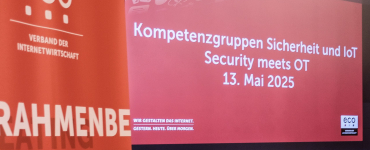Connected and autonomous mobility is not only an important topic for the automotive and Internet industries. Thorsten Stucke, eco expert Mobility, talks to us about current trends, necessities, and comfort features.
Mr. Stucke, what is currently causing the biggest changes in the automotive sector: alternative drive systems or the digitalization of vehicles?
In my view, this question divides the world into two halves: the perceived trends and the real trends. Autonomous driving feels like the number one topic. Although the discussion is exciting, it is still missing many crucial details. Almost nothing has been reliably clarified legally and that situation is even worse at EU level.
Partially autonomous driving is certainly exciting, but rather a comfort feature, which contributes very little to the actual objective, namely to be able to control traffic better. It only relieves the driver minimally, and due to the small distribution there isn’t really a positive effect for traffic flow. Rather, from my personal experiences, I would suggest that it has a negative effect on the traffic flow. If my semi-autonomous system complies with the legal framework for distance to the car in front, it is an invitation for other road users to use this space.
This is a subject that can be discussed at length. Another is about how the implementation should take place. How does an autonomous system recognize the data of the manual players? How does it detect the braking distances of other vehicles? A vehicle from the nineties has a braking distance of about 40 meters when travelling at 100 kilometers per hour (the standard is 100) and a modern vehicle has one of up to 32 meters. Sounds small, but it’s not. The impact velocity is over 40 kilometers per hour.
I consider the interconnection of infotainment systems to be more important. A lot has happened here. Traffic jams are displayed in real time and traffic control is getting better and better. Now the user only has to trust it even more. Paying from the vehicle will be a megatrend for the unstoppable progression of e-mobility. The contactless payment systems of the present are a relic of the Stone Age!
Information about when and where to refuel or load is more than a convenience feature.
Which types of information exchange do you consider to necessary for cars, which simply pleasant, and which superfluous?
First and foremost in today’s usage profiles are flow data. This means how well the traffic is flowing and where can preventive measures be taken to keep it flowing? Then vehicles should exchange information regarding the road condition with each other. This can help vehicles further downstream, to warn their users of possible dangers and, if necessary, to intervene in a controlling manner.
I find any transmission of driver-related data superfluous. Unless the driver agrees and has a clear benefit from it. Under no circumstances may driver-related route profiles and driven routes and speeds be stored!
From your point of view, what could an exchange of data between the participants look like?
Here I would like to see a technical solution first. Why is all data made available across the entire network? As a rule, communication in one or two radio cells would be sufficient. Who in Japan is interested in the current parking situation in the Düsseldorf city center? Then a secure infrastructure must be established. I consider it grossly negligent to leave this part to the manufacturers. Who offers the guarantee of security updates here?
How do you assess the legal side of this?
It is not able to help here. Attackers don’t care much about the legal situation. The law will never be able to keep pace with the technical development here. I’d be happy if someone would convince me otherwise.




